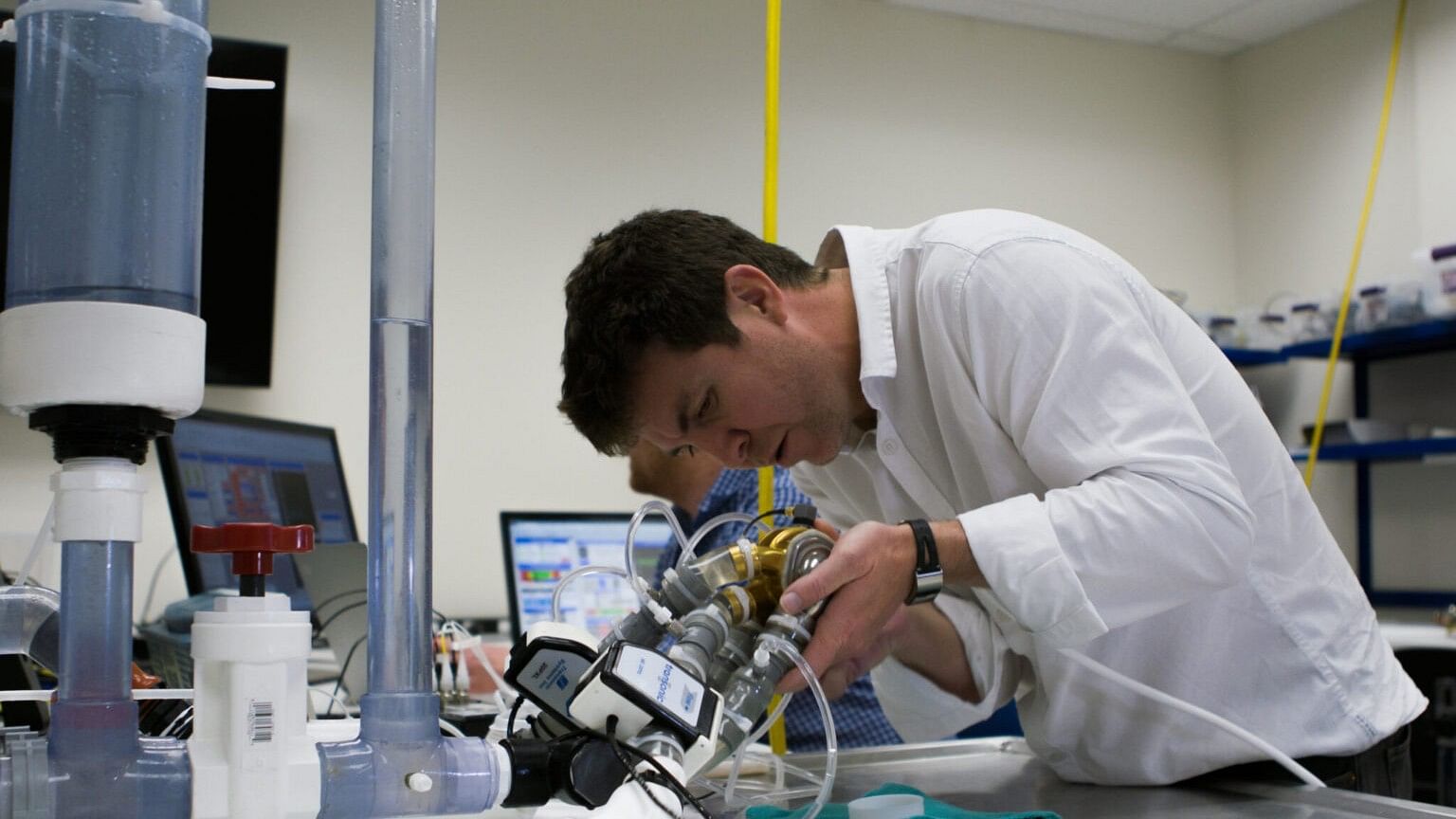
Image shared by Texas Heart Institute.
Credit: www.texasheart.org
In a first, a collaborative surgery to implant an artificial metal-based device resembling a heart was successful in the US. California-based BiVACOR collaborated with the Texas Heart Institute and implanted what's termed Total Artificial Heart (TAH), made of titanium and based on magnetic levitation (maglev) technology.
Unlike the usual heart transplant, this surgery is being hailed as a 'bridge-to-transplant solution' for patients ailing from severe biventricular or univentricular heart failure— a condition when medical professionals advise against left ventricular assist device support.
The metal device however is not a replacement for a human heart, but is a substitute for the time until the patient gets another heart for transplantation.
According to a report in Interesting Engineering, the first human transplant of this metal device by BiVACOR was performed at Baylor St. Luke’s Medical Center in the Texas Medical Center as part of the US Food and Drug Administration (FDA) Early Feasibility Study (EFS) on July 9, 2024.
What's TAH composed of?
The metal device is composed on a titanium-made biventricular rotary blood pump with one moving part that uses a magnetically levitated rotor, said the institute in a statement. The rotor helps to pump and replace both ventricles of patient during a heart failure.
The publication further reported that the 'artificial heart uses the same technology as high-speed rail lines, and now has been implanted inside a human being'.
The device implanted by experts at the Texas institute uses magnetic levitation (maglev) technology which employs magnetic fields to suspend and rotate a rotor without physical any object. Such an approach lessens friction and mechanical wear, thereby enhancing the reliability of mechanical devices.
According to ScienceDirect journal, maglev is a system of train transportation that uses two sets of magnets— one set to repel and push the train up off the track as in levitation, and the other set to move the floating train ahead at great speed taking advantage of the lack of friction.
The maglev technology is said to be aiming minimising blood trauma and improve the overall performance of the artificial heart.
In the BiVACOR TAH, maglev enables a single moving part— the rotor—to pump blood efficiently through the heart’s chambers, paving way for a more biocompatible alternative to traditional mechanical pumps that rely on multiple moving components and mechanical valves.
“The TAH brings us one step closer to providing a desperately needed option for people with end-stage heart failure who require support while waiting for a heart transplant. I look forward to continuing the next phase of our clinical trial,” said Daniel Timms, founder, and CTO of BiVACOR.